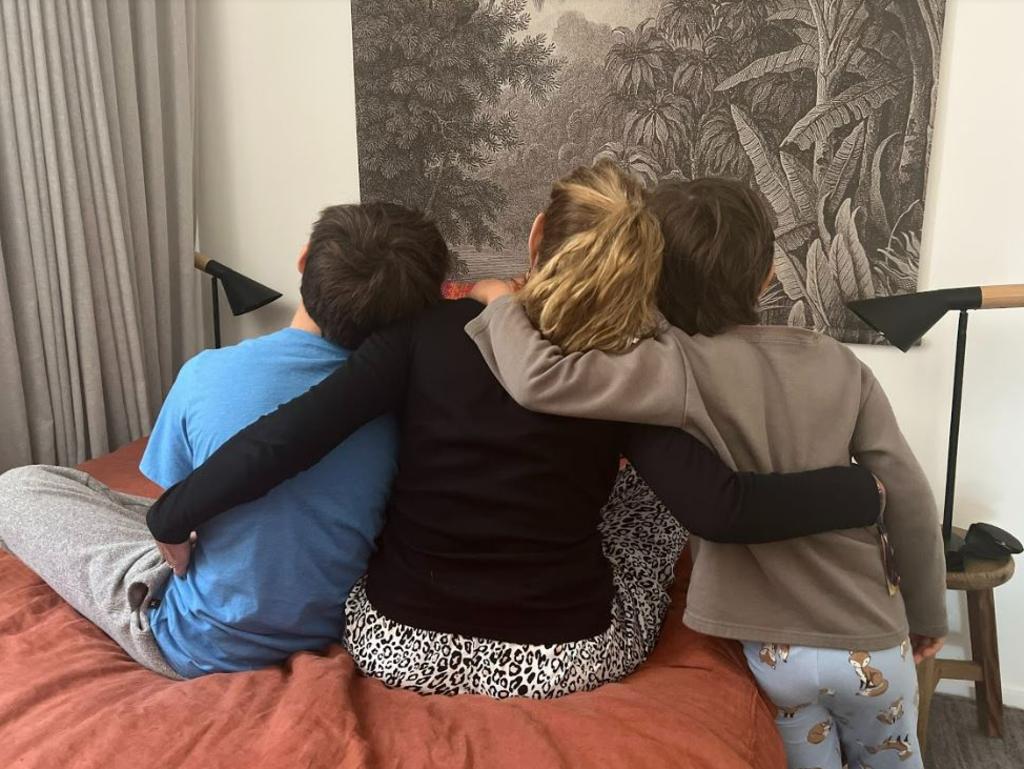New treatment to help Australians with ‘embarrassing, uncomfortable’ disorder
Revolutionary technology to help women with an “embarrassing” and debilitating disorder is now available in Australia.
Like one in four Australians, Catherine Davis suffers from a uncomfortable, embarrassing and debilitating disorder.
The Sydney mum of two experiences incontinence – a loss of bladdder control – like more than half under the age of 50 and one in three women who have given birth.
During World Continence Week, the 36-year-old opened up about her condition, admitting to seeing a psychologist because it was traumatic for her after the birth of her two boys, now aged 9 and 5.
“It’s been horrendous since I had the boys. Whenever I go out I need to know where the toilets are and how quickly I can get there,” Ms Davis said.
“Being incontinent has impacted massively on my life, and I can only wear loose trousers, usually black, in case I have an ‘accident’. Anything tight and brightly coloured is too noticeable.
“It’s also affected me having quality time with the kids – I can’t even go on the trampoline with them.
“It’s terribly embarrassing … People joke about it but it’s actually debilitating.”

Incontinence treatment was previously limited, painful and invasive, but Ms Davis has since tried revolutionary radiofrequency technology that was only launched in the nation last month.
Empower RF uses radiofrequency technology to treat weak pelvic floor muscles, stress, urge, and mixed urinary incontinence in women.
Three complementary energies – submucosal fractional radiofrequency, intravaginal electrical muscle stimulation and bipolar radiofrequency – and different applicators that are inserted internally are used during sessions.
The treatment – designed to address bladder dysfunction, genito-urinary syndrome of menopause, sexual dysfunction or enhancement, and pelvic aesthetic indications – has previously been used in the United States or America, Israel and the UK.

Ms Lowe has had four sessions and said she noticed a difference after her first.
“It’s been life-changing. If I’m out and need to pee, I can actually hold it until I get to a toilet, and I can laugh, cough and sneeze without worrying that I’m going to wet myself,” she said.
“It also feels tighter ‘down there’ in general, and I feel like I’m back to normal like I was before having children.”

Obstetrician Elizabeth Golez, who performs the treatment in Sydney, said the radiofrequencies strengthened pelvic floor muscles and returned collagen liquidity to vaginal walls.
“The response from patients so far is that it has shown a noticeable difference after just one treatment. But it’s imperative that depending on the severity of their issues, patients would need to continue to be treated for a set period of time to ensure the results are magnified,” Dr Golez said.
“We know that over time the female anatomy evolves due to multiple factors – pregnancy, childbirth, hormonal transformations, menopause and ageing, hence inevitably the pelvic floor is negatively impacted, leading to weakness and stress urinary incontinence.
“Utilising EMS (electrical muscle stimulation) via the Vtone applicator provides a muscular re-education and rehabilitation for weak pelvic floor muscles.”
The EmpowerRF technology is provided to Australian medics by InMode Australia.
The company’s managing director Dennis Cronje said the device was revolutionary because treatment could be done in office with “astounding” results rather than at a hospital.
“There are so many women suffering in silence but they no longer need to. EmpowerRF restores patient self-confidence and quality of life without surgery or prolonged downtime,” Mr Cronje said.





